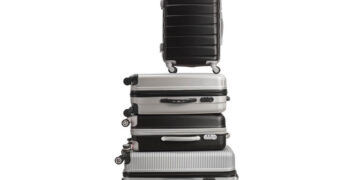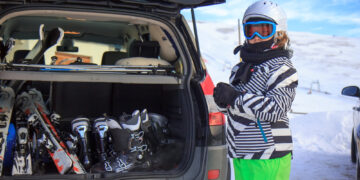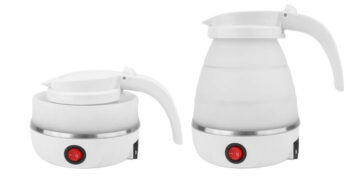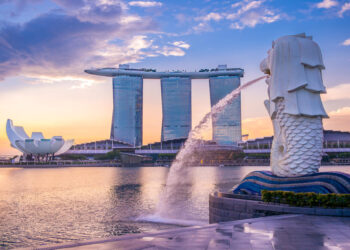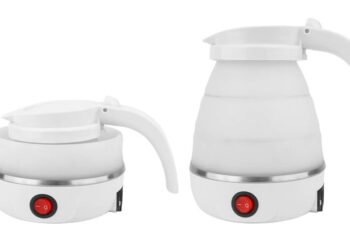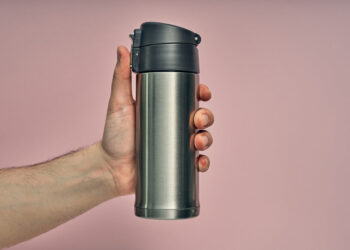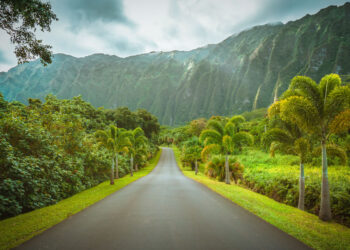The modern age of travel has always been synonymous with photography, as there has never been a better way to capture memories from a trip than to come back with photos of all of your favorite places, meals, and sights. Every traveler carries a good camera in their mobile phone in our current digital age. As much as a mobile phone is suitable for capturing photos of everyday life, it’s worth investing in a solid camera for fantastic quality photos of your trip. The below list is the ten best travel cameras that you can find at the moment.
Before getting into the list, we will look into the key considerations of buying a digital camera for travel. To skip ahead to the best travel cameras, click here.
The Difference Between Mobile Phone and Digital Cameras
Mobile phones have made an incredible difference in our ability to take photos and video as part of everyday life, so as part of any decision to pay a decent sum of money for a camera, the first question that needs to be answered is what is the difference between a camera in a mobile phone and a stand-alone digital camera?
While this topic could go into great detail, for the purpose of buying a travel camera, the critical factor is image quality. A quality digital camera will have a larger sensor, which is the surface that captures light to process into an image. The larger the sensor the more light it can capture, therefore capturing more detail.
A mobile phone sensor is typically only 25% or less the size of a good compact digital camera’s sensor, meaning it will capture less than 25% of the light that a compact camera will. This is even a smaller percentage compared to larger sensors.
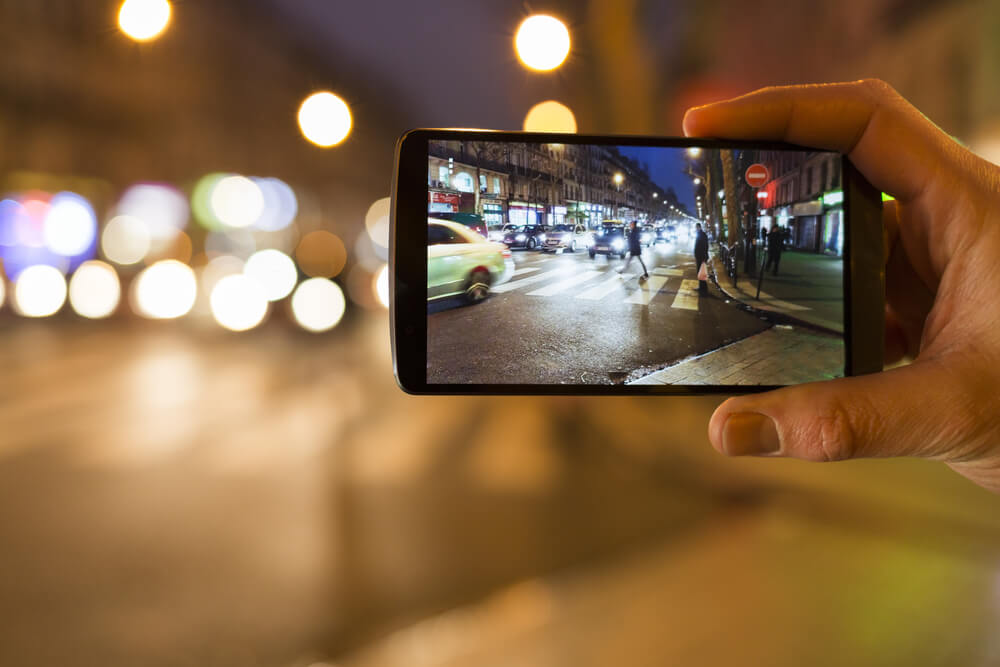
Considering that light is what creates an image, a good analogy is comparing to solar panels. If you had two solar panels made with the same technology in them, yet one is only 25% the size of the other, you would naturally expect that the larger panel will capture more light, and in turn more energy.
Well, what if the camera sensor technology in the iPhone is better than in digital cameras? Generally, digital camera manufacturers offer the best consumer camera sensors on the market given their experience in the space. Their experience is valued so much that Apple currently uses Sony sensors in their line of iPhones.
Considerations for Buying a Travel Camera
The idea of a travel camera is quite vague, as any camera can technically be a travel camera, though, for most non-professional photographers, the best travel cameras are ones that are easy to use, light to carry, and have a wide range of applications.
While you could carry a large DSLR and a bag of lenses, it may not make for a comfortable travel experience, and changing lenses may be too much work for someone only hoping to capture the moment.
The key factors that should be considered when deciding on the right camera for you amongst the best travel cameras are size and weight, sensor size, the focal length of the lens, aperture range, style and look, and of course, the price.
Size and Weight
The size and weight of a camera are generally inversely proportional to the capability and features that come with a camera. Any gains you make in a smaller size, you will need to make a sacrifice in terms of the camera’s capabilities.
It’s essential to choose a size that you will be happy to carry with you to as many places as possible. If the camera doesn’t fit comfortably in your backpack, handbag, or pocket, depending on your travel style, you are more likely to leave it behind and make do with your phone. Choose what works best for you.
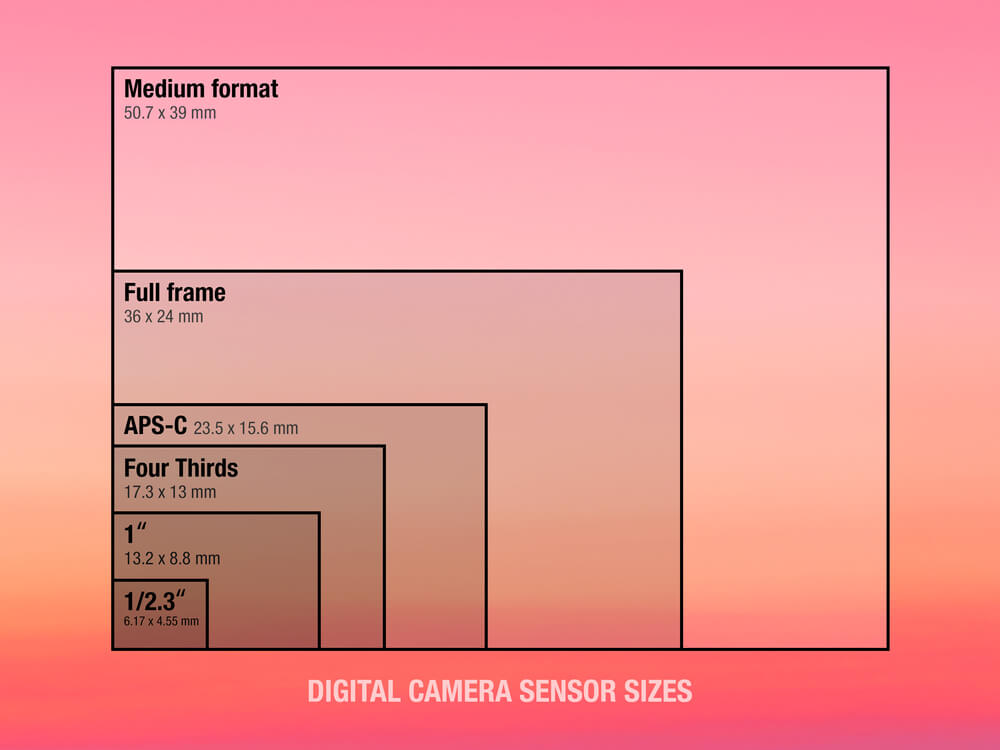
Sensor Size
The sensor size is a critical factor in determining the quality of a photo. Of course, sensor size isn’t the only factor, though, the larger the sensor size, the better quality the image will be. As mentioned above, the lack of larger sensor sizes is a crucial differentiator in why digital cameras aren’t entirely replaced by mobile phones.
The above image shows a comparison in sensor sizes, with mobile phone sensors being around the 1/2.3″ size, quality compact digital cameras offering 1″ sensors, and professional cameras generally having full-frame sensors, with larger specialty professional cameras having medium format sensors.
While quality photos can still be taken with smaller sensors, the area that larger sensors stand out is in low-light situations and in the event you want to blow up a photo for print or even to put on your TV screen in a slideshow.
Focal Length
The lens’s focal length determines how much of what is in front of you that you can capture in a photo or video. Compact digital cameras will often be around 20mm at the widest and 360mm with the farthest zoom on the market. Additionally, cameras with interchangeable lenses allow for more flexibility in focal lengths with special lenses for each length or range.
Amongst the best travel cameras, those looking for a true all-in-one camera will opt for the widest range of focal length.
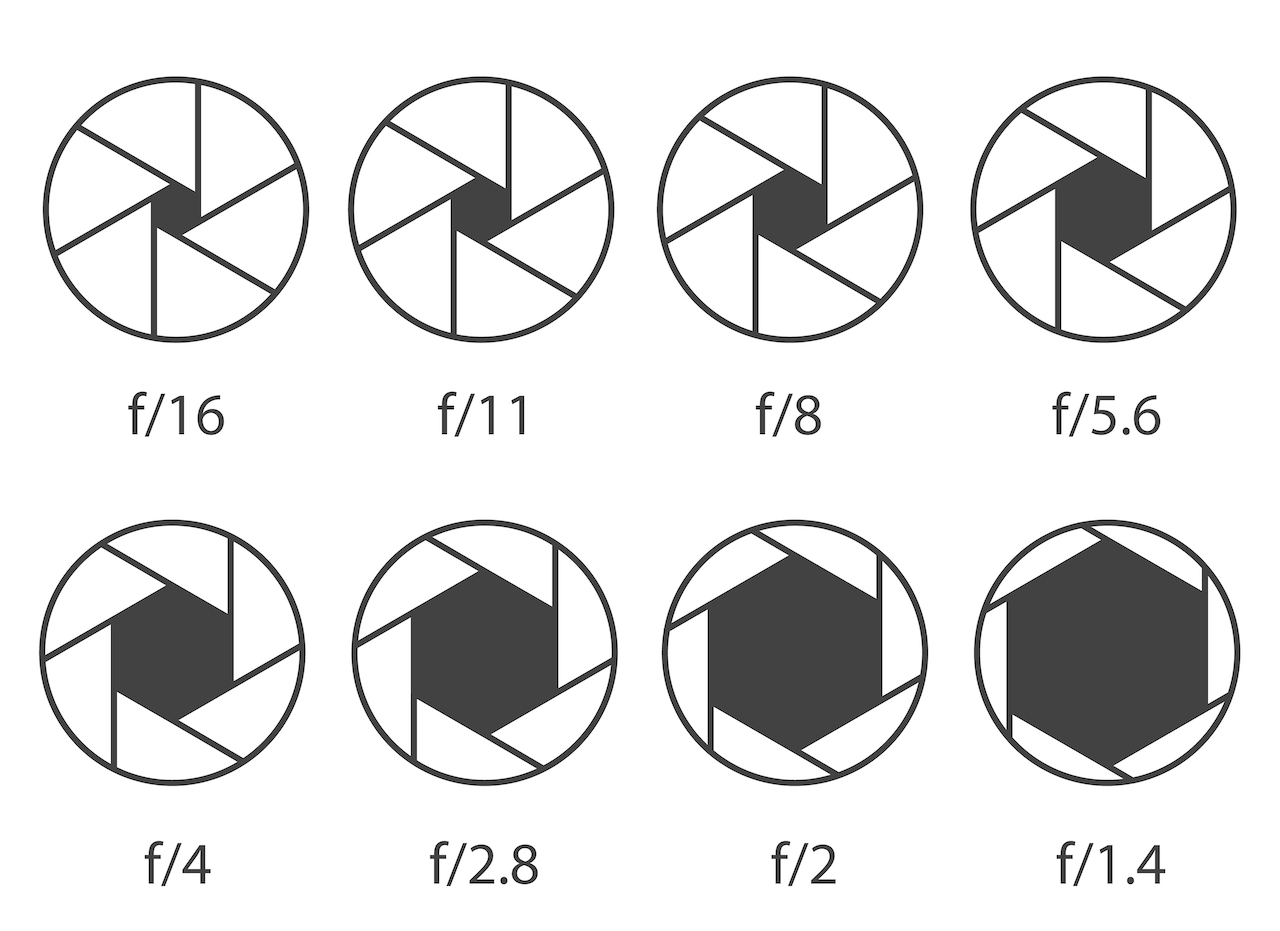
Aperture Range
A fundamental concept of photography, the aperture refers to the opening of a lens’s diaphragm, which determines how much light passes through. Represented by a numerical scale, an aperture of f/2.8 will bring in a significantly higher amount of light compared to f/22.
Regarding the best travel cameras, the lower the aperture, the better the camera will perform in low-light environments like indoor shooting and night photography. The aperture also determines the depth of field, which allows for photos with the subject in focus and the background blurred.
Style and Look
For many travelers, the style and look of a camera are just as important as its functionality for those who consider a camera to be just as much of an accessory as a handbag, scarf, or hat. The below list of travel cameras ranges from more modern styles to ones that offer modern technology with retro camera style, looking like a vintage camera from the 1970s or 80s.
Price Range
Most likely the top factor for those considering a travel camera. The range of prices amongst options varies significantly, considering the different features and image quality across the list. The cheapest option comes in at $400, and the highest prices get close to $2000.
The Best Travel Cameras for Your Next Vacation
Wander and Experience is reader-supported. When you buy through links on our site, we may earn an affiliate commission.
Best Overall – Sony Cyber-Shot RX-100 VII
Specifications
Sensor: 1-inch, 20.1 MP
Lens: f/2.8-4.5, 24-200mm
Screen: 3-inch tilting touch screen LCD
Video: 4K at 30/24 fps
Reasons to Buy
+Incredibly High Performance in a Small Package
+Wide Range of Focal Length
Reasons to Avoid
-Higher Price for Compact
The Sony Cyber-Shot RX-100 has stood the test of time through its many updates as the premier compact digital camera for travel. The Mark VII continues this legacy with incredible image quality and features on a camera that can fit into your pocket.
Packing in a lot in terms of Performance, the 1-inch Sensor combined with the wide range of focal length and aperture down to f/2.8 is an incredible set of features within a compact camera. Given this is the 7th in the series, Sony has dialed in the performance and feature quality and added in 4k with the Mark VI and later.
The only major drawback is the price. With the RX100 priced at the highest end of the compact camera range, you can, however, opt for an older model like the Mark VI, which is still well ahead of comparable models and will reduce the price incrementally.
Specifications
Sensor: 20.9MP APS-C
Lens: Interchangable, Nikon Z Mount
Screen: 3-inch, vari-angle LCD
Video: 4K at 30fps
Reasons to Buy
+Beautiful Vintage Look
+Exceptional Performance
Reasons to Avoid
-Larger Size and Interchangeable Lenses
-Premium Pricing
Best Style & Performance – Nikon Z fc
Paying homage to Nikon’s popular Nikon FM2 film camera that was produced from 1982-2001, the Nikon Z fc is a stylish option that also delivers on performance for travelers looking for a balance between function and form. With a larger APS-C sensor than the compact cameras on this list, the Z fc can produce high-quality images. Furthermore, with the full range of Z-Mount lenses available, the camera offers a lot of range in shooting options compared to other fixed-lens cameras.
The high price point and the cost of lenses make the Z fc an option that should only be considered by those serious about photography being part of their lifestyle. Not a camera that should be put away or hidden in a bag, the Z fc is a great conversation piece and will undoubtedly get comments from those who appreciate good cameras while you are traveling.
Best Value Vintage-Style – Fujifilm X-T30
Specifications
Sensor: 26.1MP APS-C
Lens: Interchangeable, Fujifilm X-Mount
Screen: 3-inch, vari-angle LCD
Video: 2160p
Reasons to Buy
+Vintage-style Mirrorless at a Great Price
+High-Performance vs. Price
Reasons to Pass
-Sub-4K Video
-Bulkier Option Compared to Compact Options
While the Nikon Z fc has only edged out the Fujifilm X-T30 in terms of performance, the X-T30 was released earlier and is now selling at a decent discount compared to the Z fc. With an equally matched sensor and high-performance marks across the board, the X-T30 makes for an incredible value for those looking for the vintage look and style, though preferring a more affordable price.
Lacking in 4K video, the X-T3 remains a street-photographer favorite for its comfortable form, lightweight to performance comparison to full-frame cameras, and the reasonably affordable X-Mount line of Fujifilm lenses.
Best Camera for a Rugged Travel – Olympus Tough TG-6 Camera
Specifications
Sensor: 12MP, 1/2.3″
Lens: f/2.0-4.9, 25-100mm equivalent
Screen: 3-inch LCD
Video: 4K at 30fps
Reasons to Buy
+Waterproof to 50-feet Deep
+Full Camera Features Compared to Action Camera
Reasons to Pass
-Limited Performance Compared to Other Compact Cameras
Made to take a beating, the Olympus Tough TG-6 Camera has earned its place amongst the best travel cameras and is an outstanding option for those planning for truly rugged travel. While its performance specifications may not measure up to most on this list, the Tough TG-6 is a true underwater camera and can exceed the depth of the flagship GoPro model. With a reasonably wide focal length range of 25-100mm, and a 3-inch rear LCD, this is an excellent camera for those who expect plenty of bumps along the way.
Best Vlogging-style Camera – Sony ZV-1
Specifications
Sensor: 1-inch, 20.1 MP
Lens: f/1.8-2.8, 24-70mm
Screen: 3-inch vari-angle touch screen
Video: 2160p
Reasons to Buy
+ Designed Specifically for Vlogging
+Vari-angle LCD Screen for Selfie-mode Filming
+Exceptional Sound Recording
Reasons to Pass
-Less Value for Photography-focused Users
-Sub-4K Video
Specifically designed with content creators in mind, the Sony ZV-1 takes the most critical features from the Sony RX100 line and swaps out the zoom range for a quicker lens. The vari-angle LCD screen works well in a selfie mode, allowing users to monitor the screen while they record. With a fast hybrid autofocus system, the ZV-1 can comfortably follow your face and maintain eye focus as you record video.
What separates this camera from the other compact cameras that are built for photography first is the sound input, with a forward-directional on-board mic and detachable windscreen, as well as a standard 3.5mm mic jack, and MI mic shoe.
Best Budget-Friendly Compact Camera – Canon PowerShot G7 X Mark II
Specifications
Sensor: 1-inch, 20.1MP
Lens: f/1.8-2.8, 24-100mm Equivalent Zoom
Screen: 3-inch Tilt-type Touchscreen
Video: 1080p
Reasons to Buy
+Affordable Compact Camera
+Sensor Size Far Exceeds Mobile Phone Quality
Reasons to Pass
-Limited Zoom
-Basic in Features
With current pricing putting the G7 X Mark II at just over $600, it may seem like a shock that this is considered the best budget-friendly option, though to put this in context. Of course, yes, you can find cheaper compact cameras, though more affordable digital cameras will struggle to exceed a solid mobile phone camera to be worth the cost.
The G7 X Mark II is the most affordable option that will offer a discernable quality difference over a mobile phone due to its 1-inch sensor size. Of course, features are limited, and the zoom leaves more to be desired, but the G7 X Mark II can definitely deliver for those looking to take their travel photography up a notch.
Best Compact Zoom – Panasonic Lumix ZS200
Specifications
Sensor: 1-inch, 20.1MP
Lens: f/3.3-6.4, 24-360mm
Screen:3-inch touchscreen
Video: 4K at 30 fps
Reasons to Buy
+Exceptional Performance at a Great Price
+Large Sensor and
+Best-in-class Focal Length Range
Reasons to Pass
-Slightly Lower Performance Compared to Top-tier Peers
-Untiltable LCD Screen
The Panasonic ZS200 hits the value sweet spot between performance and price. Delivering a 1-inch sensor size in a compact camera along with a wide focal length range, the camera stands out as a proper all-in-one camera for travelers that want to leave the multiple lenses behind and travel light. With solid 4K video capability and a pocket-friendly size, the ZS200 offers everything you need for a modern travel camera at less than half the price of the Sony RX100 VII.
Best Value Video – Panosonic Lumix G100
Specifications
Sensor: Four Thirds, 20 MP
Lens: Interchangeable, Micro Four Thirds Mount
Screen: 3-inch vari-angle touch screen
Video: 4K at 30fps
Reasons to Buy
+Solid 4K video for a Great Price
+Designed for Video First
Reasons to Pass
-Lacking In-body Stabilization
Designed with vloggers as the target market, the Panasonic Lumix G100 is an excellent option for those looking for quality video at an affordable price. With a flip-out vari-angle screen, the G100 is perfect for selfie-style videos, though it can still deliver fantastic still photographs. The lack of in-camera stabilization and the slightly larger than compact size are the only marks against the G100. However, with a discounted price compared to other top video travel cameras, this camera is still an excellent option for those looking for bang for the buck.
Best Performance For Size – Canon Powershot G1 X Mark III
Specifications
Sensor: APS-C, 24.2 MP
Lens: f/2.8-5.6, 24-72mm equivalent F2.8-5.6 zoom lens
Screen: 3-inch vari-angle touch screen
Video: 1080p
Reasons to Buy
+Incredible Performance for Compact Size
+Best-in-Class Sensor Size for Palmhead Camera
Reasons to Pass
-Sub-4K Video
-Top-tier Price
Those looking for the best possible photo camera from a camera that can still fit easily in a handbag or backpack pocket will find that in the Canon Powershot G1 X Mark III. The G1 X uses an APS-C sensor, similar to those available in a much larger DSLR, significantly increasing the photo quality for a camera that can still be considered compact.
While the G1 X stands out in its still photography, it lacks video capability compared to options like the Sony RX100 VII. Still offering 1080p video, those focused on photography primarily will find plenty with the G1 X.
Best Travel Camera for Photographers – Fujifilm X100V
Specifications
Sensor: 26.1MP X-Trans CMOS APS-C
Lens: f/2, 23mm
Screen:3-inch tilt-angle touchscreen
Video: 4K at 30fps
Reasons to Buy
+Exceptional Photo Quality
+Retro Viewfinder Design
Reasons to Pass
-High End of Price Range for Compact
-Lack of Zoom Capability
The Fujifilm X100V is understandably not for everyone; the fixed focal length means you will need to compose your photos with your feet, frustrating less-experienced photographers. For seasoned photographers, the X100V is a pleasure. The viewfinder-style combined with the sizeable APS-C sensor and prime lens make for a fun travel camera that can take incredibly high-quality photos. The price shouldn’t be overlooked as the X100V is the most expensive camera on this list. However, it’s targeted primarily at its target market of those who can appreciate a single focal length on a high-quality camera.
Best Lightweight Full-Frame Camera – Sony Alpha 7C Full-Frame Mirrorless
Specifications
Sensor: Full-frame, 24MP
Lens: Interchangeable, Sony E-Mount
Screen: 3-inch, vari-angle touch screen
Video: 4K at 30fps
Reasons to Buy
+Full-frame Sensor in a Small Package
+Supieror Performance to Compact Cameras
Reasons to Pass
-Higher Price Point with Lens Purchase
-Bigger Size and Weight to Other Options on this List
While this list has focused on smaller compact cameras for travel, there is a balance for those looking to invest in a full-frame camera for more photography applications than travel but still hoping for a lighter option to take on the road. The Sony Alpha 7C Full-Frame strikes that perfect balance between a lightweight and low-profile size and the full-frame quality and interchangeable lenses for more than just sightseeing.
The Alpha 7C’s 24MP Full-frame sensor pairs well with Sony’s E-Mount lenses and is a natural extension of Sony’s award-winning mirrorless camera line. Furthermore, with a fully-articulating 3-inch touchscreen LCD and an electronic viewfinder that sits on the rear of the camera, further reducing its profile, the Alpha 7C provides easy flexibility for intermediate to advanced photographers and content creators alike.
Bonus Camera- GoPro Hero 10
It isn’t easy to list out the best travel cameras and not mention the GoPro Hero 10. The GoPro doesn’t quite fit into the traditional camera categories as it can’t compete with sensor size or photo quality. Still, what it lacks in conventional features it more than makes up for in its flexibility and capability as an action camera, underwater camera, camera to strap to your car, strap to your bike, or strap to your head.
Capable of shooting 5.3K at 60fps video, the GoPro deserves its own category and a place in your travel bag if you will get enough use from it.













